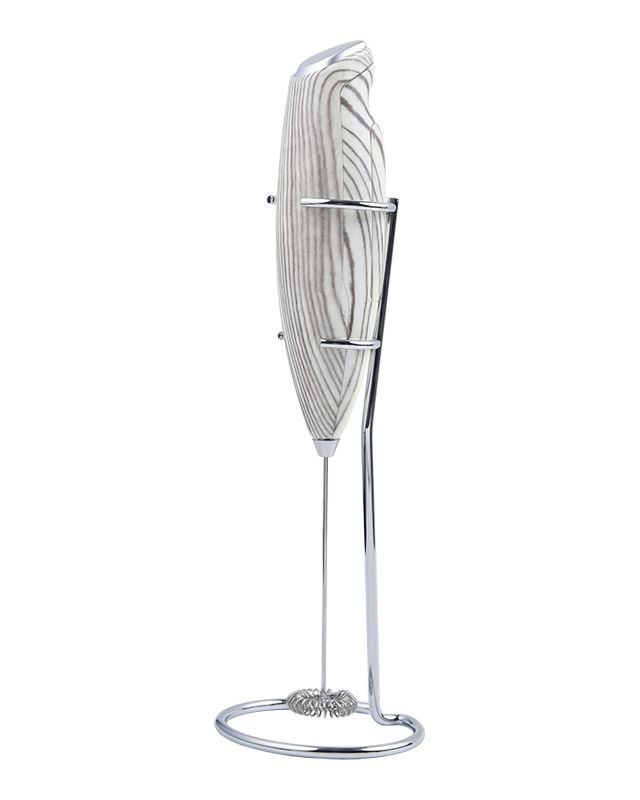The coffee mixer plays a crucial role in the coffee brewing process by transforming coffee beans into the desired consistency, whether it's coarse for French press or fine for espresso. Here's how it contributes to the overall process:
1.Grinding Consistency: Coffee mixers, equipped with precision grinding mechanisms, ensure that coffee beans are ground uniformly. This uniformity is paramount for consistency in flavor, as different particle sizes lead to uneven extraction during brewing. Even extraction is crucial for balanced flavors and aroma in the final cup.
2.Optimal Extraction: The grind size directly impacts the rate at which water extracts soluble compounds from coffee grounds. Espresso, for instance, requires fine grounds to slow down the flow of water, allowing for a more extended extraction period. On the other hand, methods like French press demand coarser grounds for a longer steeping time. By offering various grind settings, coffee mixers enable baristas to calibrate the grind size precisely, ensuring optimal extraction for each brewing method.
3.Freshness: Whole coffee beans have natural oils and volatile compounds that contribute to the coffee's aroma and flavor. Grinding coffee beans immediately before brewing preserves these essential elements. Coffee mixers allow for on-demand grinding, ensuring that the coffee retains its freshness until the moment it is brewed. This is especially crucial in specialty coffee establishments where the focus is on delivering a superior, fresh cup of coffee to discerning customers.
4.Aroma Release: Freshly ground coffee releases a burst of aroma, indicating the coffee's quality and freshness. This aromatic richness enhances the overall sensory experience, engaging customers' senses before they even take the first sip. Coffee mixers contribute to this experience by effectively breaking down the beans, liberating the volatile compounds that create the enticing aroma, enticing customers and enhancing their perception of the coffee's quality.
5.Customization: Different brewing methods demand specific grind sizes to achieve the desired flavor profile. Espresso requires a fine grind for the pressure to extract concentrated flavors, while coarser grinds are ideal for methods like pour-over or cold brew. Coffee mixers with adjustable grind settings empower baristas to tailor the grind size according to the chosen brewing method and the preferences of the customers. This level of customization is essential for specialty coffee shops catering to diverse tastes and preferences.
6.Control over Brew Time: For espresso brewing, controlling the grind size is pivotal for regulating the flow rate of water through the coffee puck. By adjusting the grind setting, baristas can control the time it takes for water to pass through the coffee grounds. This control ensures that the espresso shot is neither under-extracted (resulting in weak, sour flavors) nor over-extracted (leading to bitter, harsh tastes), thus maintaining the balance and quality of the shot.
7.Crema Formation: In espresso preparation, achieving the perfect crema is an art. Crema, the golden layer of foam on top of an espresso shot, is a result of emulsification of oils and carbon dioxide during the brewing process. The right grind size plays a pivotal role in crema formation. A coffee mixer, with its precise grinding capabilities, ensures that the coffee grounds are fine enough to facilitate proper emulsification, resulting in a thick, creamy crema that signifies a well-brewed espresso shot.
Milk Frother, Milk Foamer, Coffee Mixer, Mini Mixer, Stirrer, Whisk EP-568B-5

Milk Frother, Milk Foamer, Coffee Mixer, Mini Mixer, Stirrer, Whisk EP-568B-5




 English
English
 Français
Français
 Español
Español
 Deutsch
Deutsch
 日本語
日本語





























